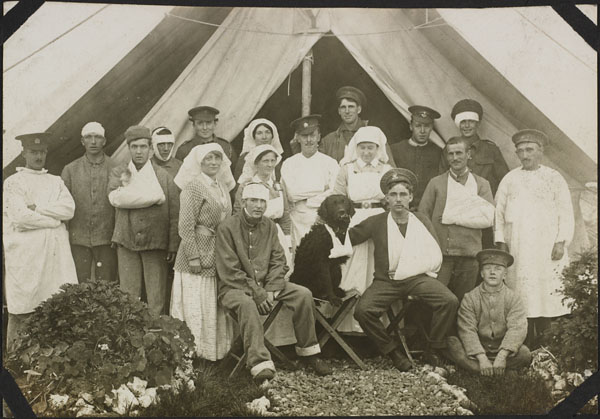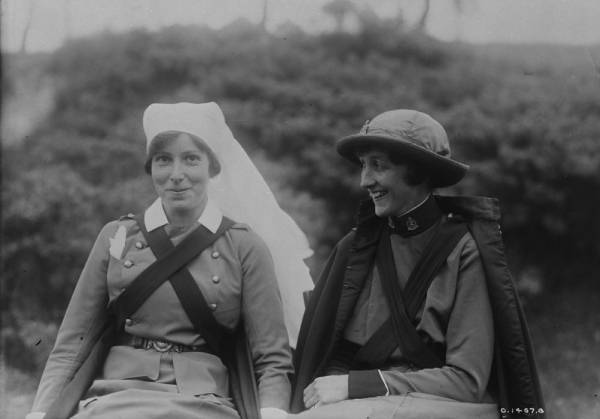Military Nurses National Historic Event
Military Nurses were designated a national historic site in July 2014.
Historical importance: Nursing sisters were the first women to receive military rank in Canada and indeed throughout the Commonwealth.
Commemorative plaque : To be determined, N/A
Thousands of Canadian nurses have provided skilled and compassionate care to the sick and wounded in battle since 1885. In 1904, professional nurses entered the Canadian Army Medical Corps as Nursing Sisters. They were the first women in the British Empire to receive military rank. During the First and Second World Wars, they worked in difficult conditions and under fire. Hundreds were decorated for their service. Dozens died from direct enemy action. As Nursing Officers, they helped improve health care in Canada’s overseas conflicts, led the way for women in the armed forces, and enhanced nursing as a respected profession.
Military Nurses

© Expired - Éditions Arnault / Alice Isaacson fonds / Library and Archives Canada / e007150657

© Canada. Dept. of National Defence / Library and Archives Canada
Since 1885, thousands of Canadian nurses have provided skilled and compassionate care to the sick and wounded in battle. During the South African War and the First and Second World Wars, professional military nurses contributed to the defence of Canada by helping to improve the level of health care provided to military troops. The first women to be accorded military rank in the Canadian forces, these Nursing Officers paved the way for the entrance of women into the military in other capacities. Demonstrating courage and loyalty under fire, their service to the country enhanced the status of nursing as a respected profession.
In 1904, professional nurses entered the Canadian Army Medical Corps as Nursing Sisters. They were the first women in the British Empire to receive military rank. During the First World War, Nursing Sisters provided skilled nursing care to the sick and wounded, often working in difficult conditions, even under enemy fire. Many served overseas, while others worked in military hospitals in Canada. In the Second World War, Nursing Sisters served in the Royal Canadian Army Medical Corps, the Royal Canadian Air Force (RCAF) Medical Branch, and the Royal Canadian Naval Medical Service. Continuing a trend begun in the First World War, Canadian military nurses took on increasing responsibility and risk, serving close to combat zones in casualty clearing stations and on mobile surgical teams. They administered new techniques such as blood transfusions and antibiotic drugs. Some RCAF nurses learned to take part in air evacuation and para-rescue operations. In both world wars, hundreds of Canadian military nurses were decorated for their service and dozens died from direct enemy action.
Following the Second World War, the size of the nursing service was reduced and military nurses worked in military hospitals in Canada, or with the Department of Veterans Affairs. A few nurses saw service in the Korean War as members of the Allied forces or serving with Canada’s North Atlantic Treaty Organization (NATO) forces.
The wartime service of Canadian military nurses, particularly during the First World War, when the profession was still forming, added significantly to the status of nursing as a profession. Nurses also lobbied for and contributed to war remembrance, notably through the Canadian Nurses Association’s marble relief, which is dedicated to military nurses and nurses in Canadian history. It is located outside the Canadian Parliamentary Library in Ottawa.
The National Program of Historical Commemoration relies on the participation of Canadians in the identification of places, events and persons of national historic significance. Any member of the public can nominate a topic for consideration by the Historic Sites and Monuments Board of Canada.
- Date modified :